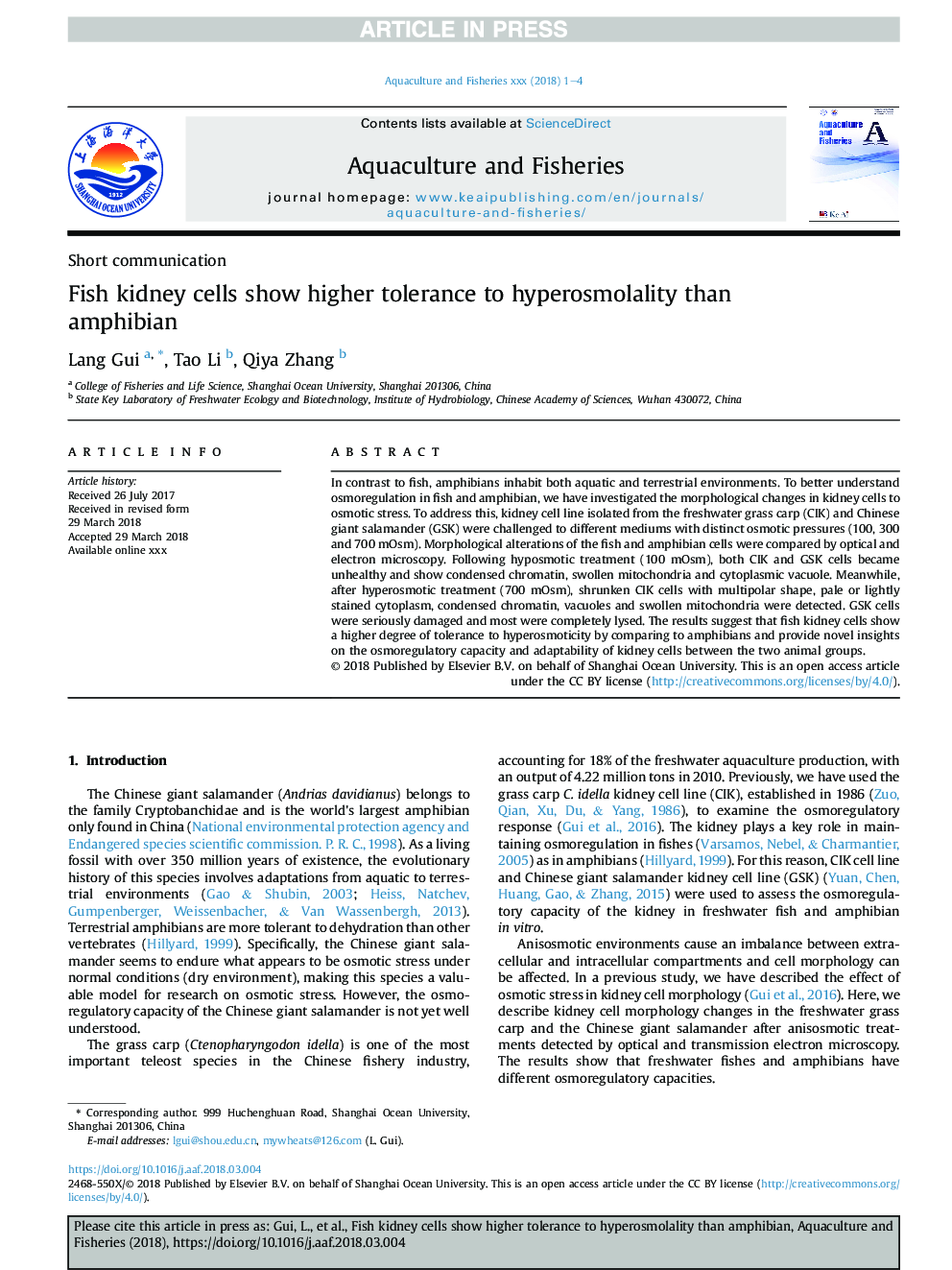| Article ID | Journal | Published Year | Pages | File Type |
|---|---|---|---|---|
| 8919981 | Aquaculture and Fisheries | 2018 | 4 Pages |
Abstract
In contrast to fish, amphibians inhabit both aquatic and terrestrial environments. To better understand osmoregulation in fish and amphibian, we have investigated the morphological changes in kidney cells to osmotic stress. To address this, kidney cell line isolated from the freshwater grass carp (CIK) and Chinese giant salamander (GSK) were challenged to different mediums with distinct osmotic pressures (100, 300 and 700 mOsm). Morphological alterations of the fish and amphibian cells were compared by optical and electron microscopy. Following hyposmotic treatment (100 mOsm), both CIK and GSK cells became unhealthy and show condensed chromatin, swollen mitochondria and cytoplasmic vacuole. Meanwhile, after hyperosmotic treatment (700 mOsm), shrunken CIK cells with multipolar shape, pale or lightly stained cytoplasm, condensed chromatin, vacuoles and swollen mitochondria were detected. GSK cells were seriously damaged and most were completely lysed. The results suggest that fish kidney cells show a higher degree of tolerance to hyperosmoticity by comparing to amphibians and provide novel insights on the osmoregulatory capacity and adaptability of kidney cells between the two animal groups.
Related Topics
Life Sciences
Agricultural and Biological Sciences
Aquatic Science
Authors
Lang Gui, Tao Li, Qiya Zhang,
